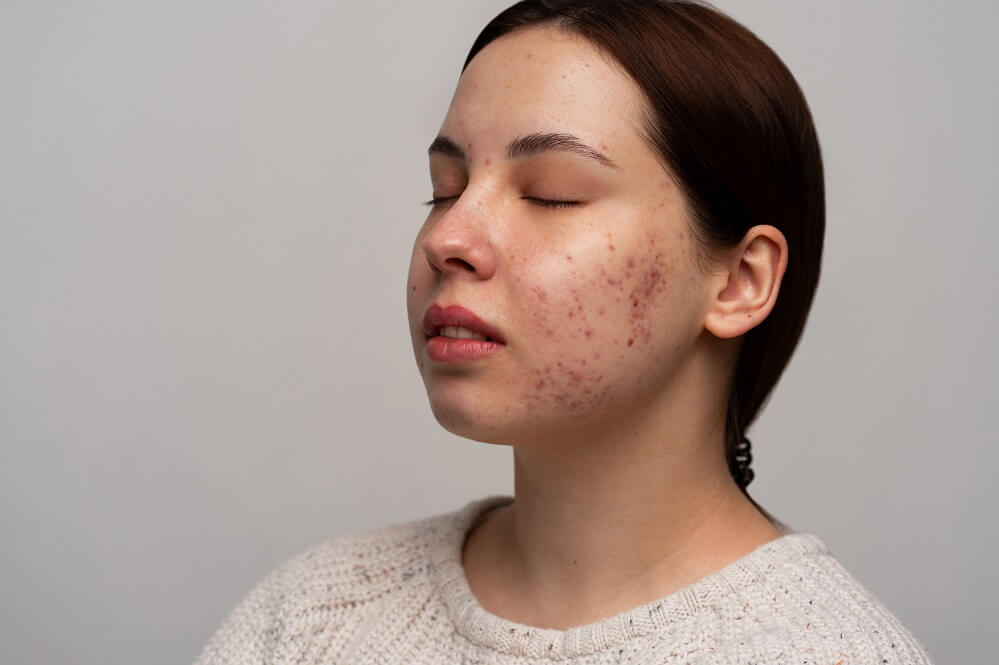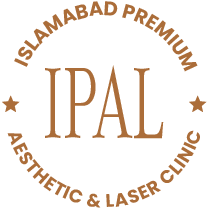
When the hair follicles become clogged due to excessive sebum production and bacteria, the resulting condition is known as acne. The sebum present in these follicles leads to breakouts on the skin, known as ‘pimples’. The breakouts generally show up on the back, shoulders, and neck.
There are different types of acne spawned by numerous reasons. Teenagers and adults are chiefly affected by acne, but it can also pop up in adulthood. We will gain an understanding of the causes of acne and how to get rid of acne in this blog.
Types of acne
As discussed earlier, there are different types of acne on the basis of their presence, cause, and severity. Most of the acne appears during puberty and lasts until the thirties. Let’s have a look at the types of acne in detail.
Acne Vulgaris
The medical name for acne is acne vulgaris. There are different types of acne that come under this umbrella word, including whitehead, blackhead, and pimples. The most common areas affected by this kind of acne are the back, neck, face, and shoulders. It can easily be treated by a dermatologist. A comedo is a hair follicle that becomes clogged with oil and dead skin cells. The non-comedogenic products are used to unclog the pores and to prevent acne.
Blackheads
Blackheads are a type of comedone that are open at the skin surface. The black colour is due to the irregular reflection of light. They can be treated with medicines and topical lotions.
Whiteheads
The comedones which are closed from the surface of the skin are called whiteheads. The skin cells and oil stop a hair follicle from opening.
Papules
The papules are small red or pink bumps on the skin. It is recommended not to touch or squeeze the pimple as it may become worse. A large number of papules indicates a large number of acne.
Pustules
They are kind of whiteheads that are inflamed, but it is filled with pus and may be painful.
Nodules
Nodules are enlarged bumps that are firm to the touch. They root deep down the skin and are mostly painful. If nodules are not treated by a dermatologist, they may cause scars. Cosmetic procedures and drugs can treat them effectively.
Cyst
Cysts are large, pus-filled lesions that look similar to the boils. They are present deep under the skin. The bacteria accumulate in pores and cause inflammation. Cysts should be treated by a dermatologist to avoid the pain and spreading. It is a more severe form of acne and can lead to acne scarring.
Causes of acne
The acne may be caused due to multiple reasons. As we know, acne is caused by the production of excess sebum and clogged pores. The bacteria present in hair follicles combined with certain things in your environment contribute to acne, such as air pollution and weather conditions. The following are the things that cause acne:
· Excess sebum production
· Bacteria
· Stress
· Hormones
· Family history
· Medications
What causes back acne in females?
Back acne is the second most body part affected by acne, and the pores are easily clogged. The back acne in females can be caused by a variety of reasons. The reasons include clothing, heat, sweating, and friction. Like facial acne, predisposed factors can also lead to back acne, like stress or medication. Picking of acne, tight clothes, insufficient hygiene, and other lifestyle factors can affect acne. Hormonal imbalance also stimulates the acne. Mostly, acne on the back can easily be treated, but severe forms of acne, such as acne fulminant and nodular lesions, need medical treatment. If you are struggling to find an expert for the treatment of acne on the back, IPAL clinic provides the best treatment in the town.
What foods cause acne?
Diet plays a pivotal role in maintaining one’s health. A good and balanced diet leads you toward a healthy and active life. In the case of acne, diet is a crucial part. There are some triggers of acne in food, which are discussed below. Let’s have an eye on them.
· Dairy products such as yoghurt milk skimmed milk may trigger acne in some people as the body cannot tolerate the Lactose present in dairy.
· Whey protein is another cause of acne as it induces sebum production.
· High sugar in food has been proven as a potential trigger of acne.
conclusion
Visiting a healthcare specialist when you notice pimples on your skin is recommended to prevent the spreading of acne all over the skin. Severe types of acne need some extra care to get treated. IPAL clinic provides dermatologists with years of experience in dealing with acne.

